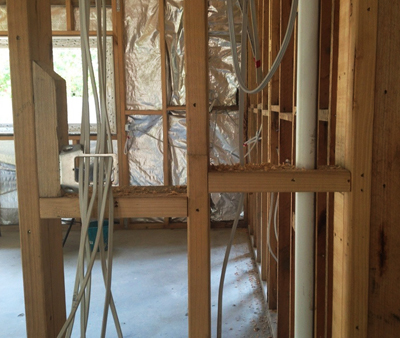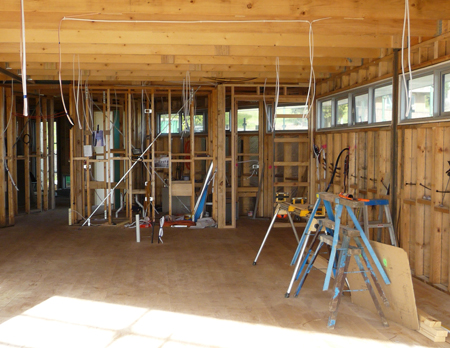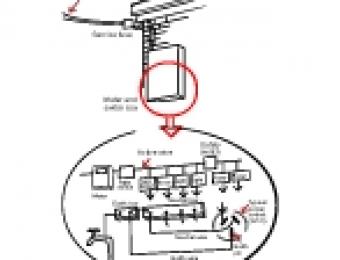[caption caption="We tend to forget just how much is actually going on in our wall cavities..." align="left"]
[/caption]
The term ‘rough in’ describes the installation of a building’s plumbing and electrical services in wall cavities, before the walls are lined with plasterboard.
Once the exterior cladding’s gone on (or while it’s going on), licensed plumbers and electricians will enter the house to put in the necessary piping, cabling and fittings.
Plumbing rough-ins
If you ask a plumber, the entire point of a house is to control water… That might be a slightly skewed perspective, but it’s true that plumbing goes all over the house, and is an extremely important part of a modern home.
If you’ve got a timber-framed house, the plumber will cut modest holes in strategic points in the wall studs to run pipes through so that plumbing supply and drainage are available where they’re supposed to be. If the holes that are cut in the frame are deemed to be ‘excessive’, these structural members will need to be replaced or appropriately reinforced, to ensure that they’re still structurally reliable.
If you’ve got a steel frame, this shouldn’t be an issue – most steel frames already include holes for plumbing and electrical services to run through.
Regardless of the type of frame you have, it’s also important that plumbing pipes are properly fastened and secured to the frame to prevent what’s known as ‘water hammer’. Water and air rushing back and forth through pipes can create quite a force on them and make them move back and forth, which over time may cause mechanical damage (i.e. broken pipes) - which can obviously lead to water leaking in walls, and far worse things.
[caption caption="Wiring typically runs all over your house." align="right"]
[/caption]
Electrical rough-ins
The electrical services that need to be roughed in will depend on what’s planned for the house, but generally include:
- Lighting
- General purpose outlets or GPOs (i.e. power points)
- Ovens and cooktops
- Rangehoods
- Air conditioners
- Heaters
- Fans
- Electric hot water units
- Smart Wiring / structured cabling
- Home automation systems
- Etc.
As is the case with plumbing, it’s very important that wall studs or other structural members that are cut away too substantially be either replaced or appropriately repaired. Cabling that’s run outside of walls will need to be appropriately shielded, as per the Australian/New Zealand Standard for Wiring Rules (AS/NZS 3000:2007).
Likewise, it’s important that the electrician knows exactly where everything’s supposed to go, and the exact specifications for whatever’s being installed so that there’s less room for error or confusion. The precise locations of the electrical fittings will often be marked on the floor so that they can be easily located and cut out when the plasterboard goes up for your home's interior walls.
How long does the rough in stage usually take?
Depending on the size of the house, it normally takes a couple to a few days for wiring and plumbing services to be roughed in.
Who roughs in services?
- Plumbers
- Gasfitters
- Electricians
- Custom installers (for home automation, Smart Wiring etc.)







